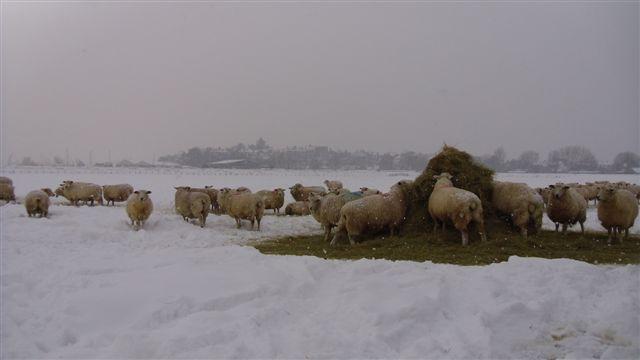By Jimper
Father owned two six miles apart, one in Sussex where we lived, and the other in Kent. This farm was up on top of a hill with a northerly aspect and comprised of orchards, arable and sheep. The trees in the orchards were either apple or old cherries and the trees were enormous but cropped heavily. The varieties were old fashioned and full of flavour. Having trees on the farm was a Godsend as the other farm made a lot of muck from the pigs. It was my job to cart this manure the six miles in a trailer behind a tractor and distribute it around the base of the trees.
The home farm was marshland, where we had a flock of two hundred and fifty Kent sheep and a dozen bullocks. The rest was arable that yielded the upland farm twofold. Three fields at home were fenced primarily for pigs. Well fenced with pig netting on stout stakes, the field side was completely surrounded by sheets of corrugated iron held in place with metal stakes. With the tin in place, the pigs had no way of rooting up the fence or making a hole to escape, or that was the theory! One of the many old sows we owned was a Saddleback, whose ears hung over her eyes, yet it never seemed to affect her sight. If there was a chance to escape, she was the one that found it. I believe she spent as much time roaming free as she did confined to our fields. She had the habit of always vanishing when she was due to farrow down and some of the distances she travelled were as- tounding! My father never worried when she went absent as eventually she would return home with her family around It was a different world in those days and unless one of our pigs rooted their garden up, the few locals took little notice. Today the whole area is built upon or the vast open spaces are the local nature reserve so my animal would be reported immediately. If the pigs did manage to get out it was usually in the summer by wading across a ditch after they had enjoyed a good mud wallow in the shallows. To round them up one had only to rattle a metal bucket and they trotted home with the old skip and sideward waggle of their back feet.
For harvesting the corn, we employed a contractor; then it was all hands to the pumps until the last sack was safely in the barn and the straw was baled and carted. That job was backbreaking as in those days it was all done by hand; we never had any hydraulic lifts fitted to the tractor. Like all the dung I carted, it all had to be shifted with a fork and shovel.Our breeding sows lived outside, free range, all year; it was only the young ones that we fatten that were penned.
Other than shovelling dung all day the other task I never looked forward to was hay carting. The only way to load the bales of hay was by grabbing the two strings holding the bale together with your hands or using a pitchfork. Either way the old dry thistles always managed to get you, either in the hands or in your shoulder. Harvest time was not a lot easier as then all the corn was bagged on the combine and when you had five or six bags tied up, you pulled a rope and dropped them down a slide to the ground. Come the evening the dew made the standing corn too damp to cut and you had to stop and then mount the tractor with a trailer and manually hump the heavy sacks of corn up and onto the trailer. Returning to the barn, you th en u n – loaded and if all the sacks were picked up it was time to feed the pigs then go to bed ready for tomorrow.
First Published in “Cinque Ports” November 2015
All articles, photographs, films and drawings on this web site are World Copyright Protected. No reproduction for publication without prior arrangement. (Hard Copy Back Numbers Still Available) © World Copyright 2017 Cinque Ports Magazines Rye Ltd., Guinea Hall Lodge Sellindge TN25 6EG
